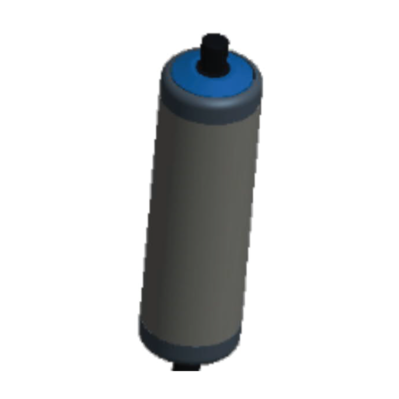Are you an enthusiast of the world of material handling, or are you personally involved in the manufacturing or packaging industry? Have you ever stopped to consider the incredible mechanisms behind everyday factory operations? Modern factories operate like well-oiled machinery, with each part playing a crucial role. One such integral component is the conveyor drive roller, and in today’s post, we’re going to delve deep into understanding its function in material handling.
Imagine a busy factory floor with countless goods and materials moving from one point to another, in what seems like a beautiful, synchronized dance. The lifelines of this operation are the conveyor belts, powered by the unsung heroes, the Conveyor Drive Rollers. Exciting, right? Let’s dive deep together into the world of these mechanical systems and the significant roles they play in our industries.
In this blog, we will engage, explore, and enlighten by breaking down the intricate functionality of Conveyor Drive Rollers. You will understand the how, the why, the when, and the what of these critical units in material handling, setting you up for a journey into the heart of your factory floor.
Table of Contents
What are Conveyor Drive Rollers?
Stepping into the world of Conveyor Drive Rollers, these unassuming devices are the powerhouses of a conveyor belt, designed to facilitate the smooth movement of goods and materials along a belt system. Housed within robust structures, these rollers are responsible for transmitting power from a drive system to the conveyor belt, instigating a series of orderly movements that are the backbone of many industries.
Often taken for granted, conveyor drive rollers are typically made of sturdy, durable materials like stainless steel or plastic. They come in various sizes and configurations to cater to diverse industrial needs. To perform efficiently, precise alignment and meticulous maintenance of these units are necessary.
The colossal role these rollers play cannot be overstated. As the answer to mass material movement, they are integral in the manufacturing, packaging, and logistics industries. Whether you’re transporting bricks in a construction site, or sorting parcels in a logistics warehouse, conveyor drive rollers are indispensable making work faster, safer, and more efficient.
Intricate Mechanics of Conveyor Drive Rollers
Understanding the inner workings of conveyor drive rollers begins by exploring their two main elements: the drive system and the roller system. The drive system, commonly electrically powered, provides the energy to move the belts. On the other hand, the roller system is a series of cylinders lined up to support the belt, reduce friction, and allow a smooth transportation of goods.
A typical roller system comprises motor-driven rollers that transfer power to the belts through a series of gears and flexible couplings, allowing for variable speed control. Some models also incorporate advanced technologies, like sensors and automated controls, to ensure streamlined operations and minimal interruptions.
These components coupled with the power of the drive system result in an efficient, reliable, and high-speed transportation platform. They allow for continuous, steady material movement, transforming production lines into efficient assembly operations.
Why are Conveyor Drive Rollers Essential?
Now, you may be wondering, why is all this fuss about conveyor drive rollers? Well, the significance of these components lies in the core benefits they offer. They enable industries to optimize operations, reduce human contact (thus, minimizing potential injuries), and increase productivity by ensuring a constant, steady flow of materials.
Further, these devices help to reduce manual labor, which not only brings economic advantages but also improves the workers’ welfare by removing them from strenuous and potentially hazardous situations. From a business point of view, conveyor drive rollers also provide an energy-efficient and cost-effective solution for material handling needs.
Moreover, they offer flexibility of use. Conveyor drive rollers can be designed and customized to accommodate various industry needs and material types, ensuring their widespread applicability across diverse sectors. Hence, these are not mere mechanical devices, but vital industry assets.
Pros and Cons of Conveyor Drive Rollers
Like any other mechanical component, conveyor drive rollers come with their share of strengths and weaknesses.
The greatest advantages of these units are their efficiency, flexibility, and safety. They move materials quicker, with less labor, and with a reduced potential of on-the-job accidents. Furthermore, they require minimal effort to operate and maintain, making them a cost-effective choice.
However, on the downside, conveyor drive rollers can be subjected to heavy wear and tear and are susceptible to malfunction if not maintained properly. Additionally, they may also pose safety hazards if not correctly installed or used.
Conclusion: Realizing the Importance of Conveyor Drive Rollers
As we conclude this insightful journey into the world of conveyor drive rollers, it becomes evident how these simple devices play an integral part in many industries. Their role in material handling is significant, almost pivotal, as they keep the wheels of industry turning smoothly and efficiently.
While they may not stand in the limelight, these workhorses operate behind the scenes to help us build, package, and transport materials in our everyday operations. By facilitating a safer, more efficient, and cost-effective solution for material handling, conveyor drive rollers are central to the future aspirations of the industry.
So, next time you see a conveyor belt, take a moment to appreciate the powerhouse behind its efficient functioning – the conveyor drive roller. With this newfound understanding, you’ll look at your production line in a fresh light, appreciating the minor components that make up the whole in delivering efficiency and productivity.

